Well, Let’s Start at the End of 2020, First
So the season ended well last year. Of course, it was the Fall of Anno Covitatus, which meant that a lot was going on.
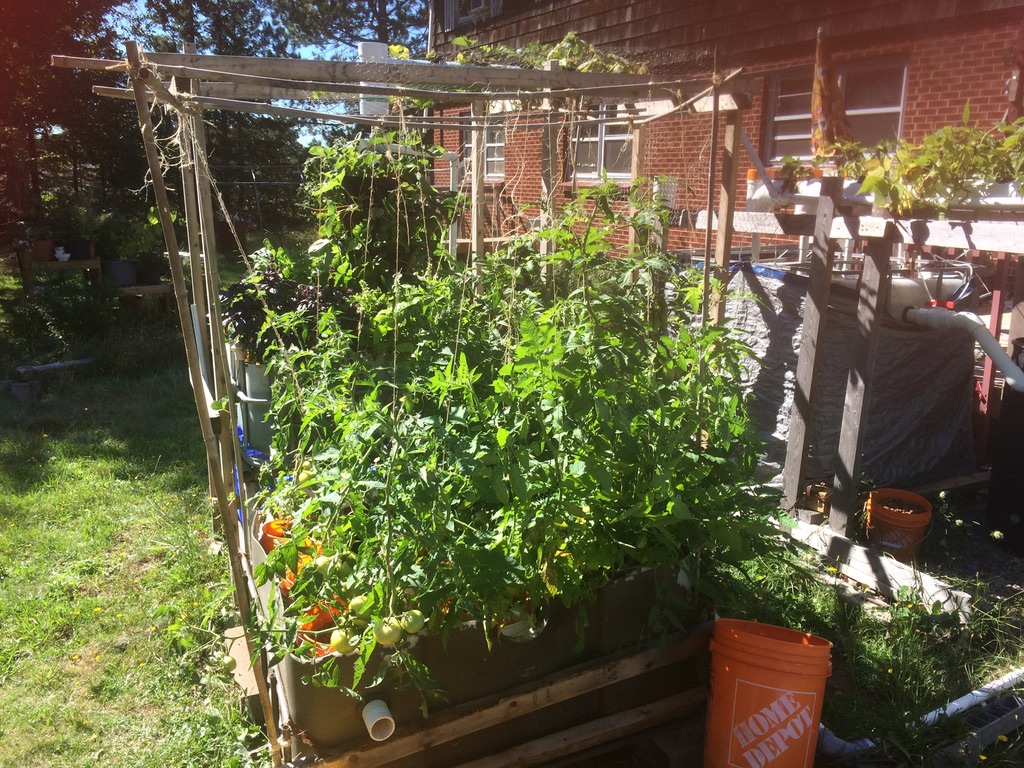
Amongst other things, I had some mental health challenges that simply made social media in general and blogging in particular a lot more effort than it was worth. That’s mostly sorted out now and I’m doing a lot better.
The “Dutch Bucket In Bucket” concept for the tomatoes worked brilliantly, as you can see from the photo to the right. 12 plants in 9 buckets produced a wealth of all three kinds of tomatoes we planted. We had cherry tomatoes for grazing snacks, slicing tomatoes for summer sandwiches, and of course sauce-making tomatoes.
Definitely, going forward, this will be how I do tomato plants in Aquaponics going forwards. No root-control issues, easy to maintain, easy to harvest and easy to close out.
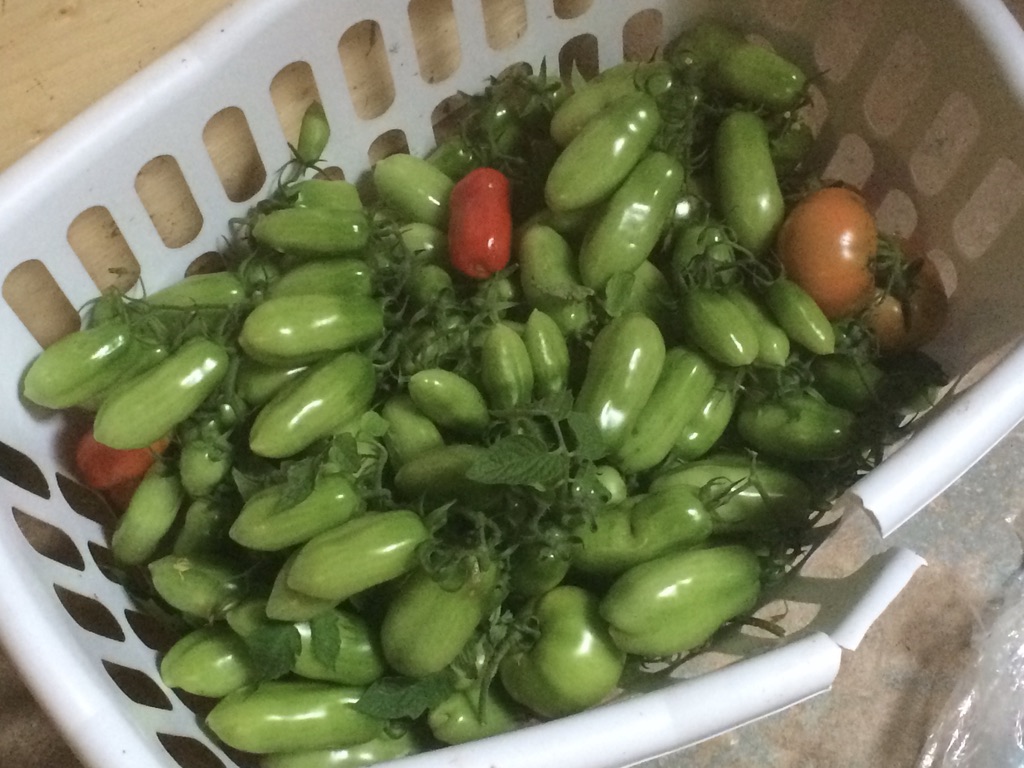
We harvested out two full laundry baskets of vegetables at the end of the season, including enough Northern Lights Rainbow Chard that my partner Chrissie blanched and froze a lot of of it for over the winter.
That worked perfectly, in fact. All we would do is use the vegetable steamer, drop the frozen brick of Chard into it, and let the heat from the boiling water thaw and cook the leaves. Essentially, like steaming beet greens. Delicious and a heap of “saved sunshine” in the freezer for January and February meals. We’ll definitely be doing that again this season.
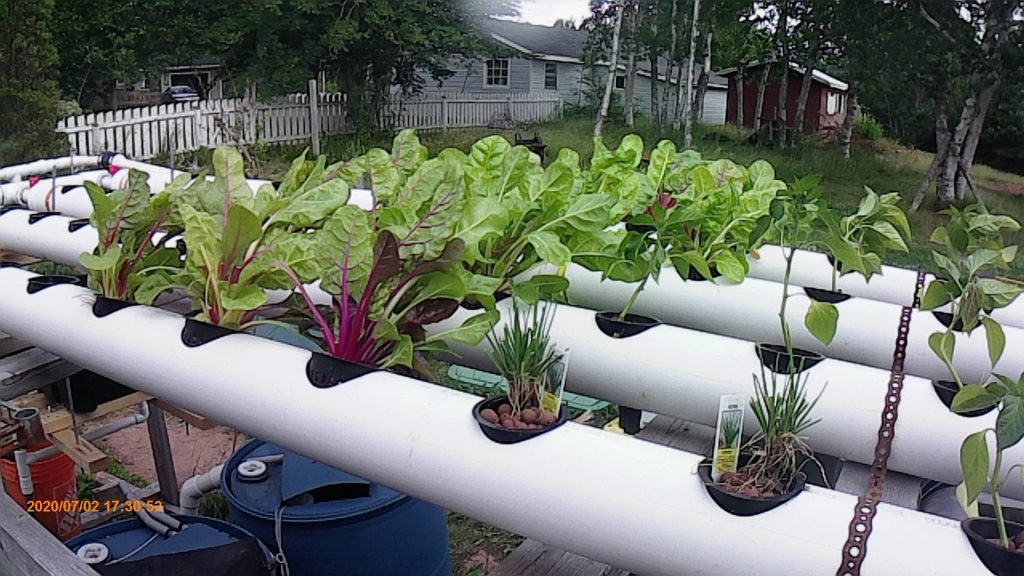
We moved the goldfish indoors to the downstairs system and I opened the valves up and let the system drain. Winter damage was minimal; a couple of 25mm ball-valves didn’t survive, nor did the 2700L/h bilge pump I was experimenting with for building a solar-power tank-mixer / Venturi aerator for the Moving Bed Bio-Filter (MBF).
The indoor system is now a pair of them; a 450L system in the basement, and a 200L system in my office.
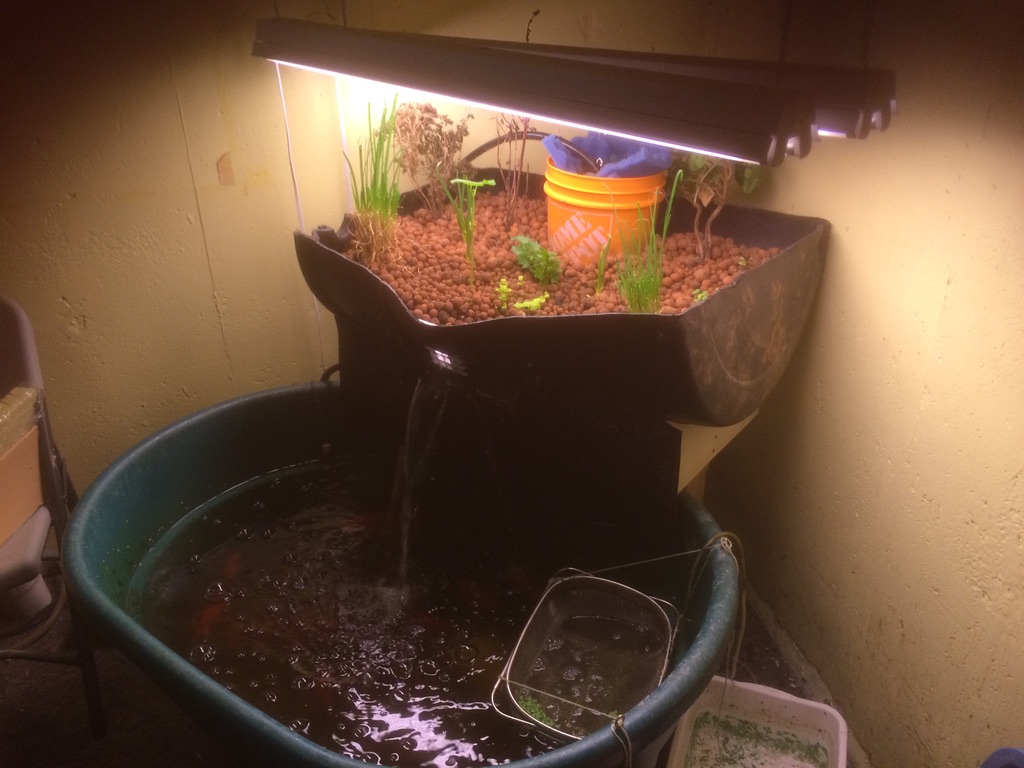
The 450L Basement System is pretty straight-forward stuff. It’s a 450L stock tank from the local farm supply store as the floor-grade fish tank. I don’t fill it up all the way due to a trio of inquisitive cats who live here, so a bit of extra freeboard is good. A set of White/Red/Pink brilliant LED grow-lights are hung from the ceiling over the grow bed.
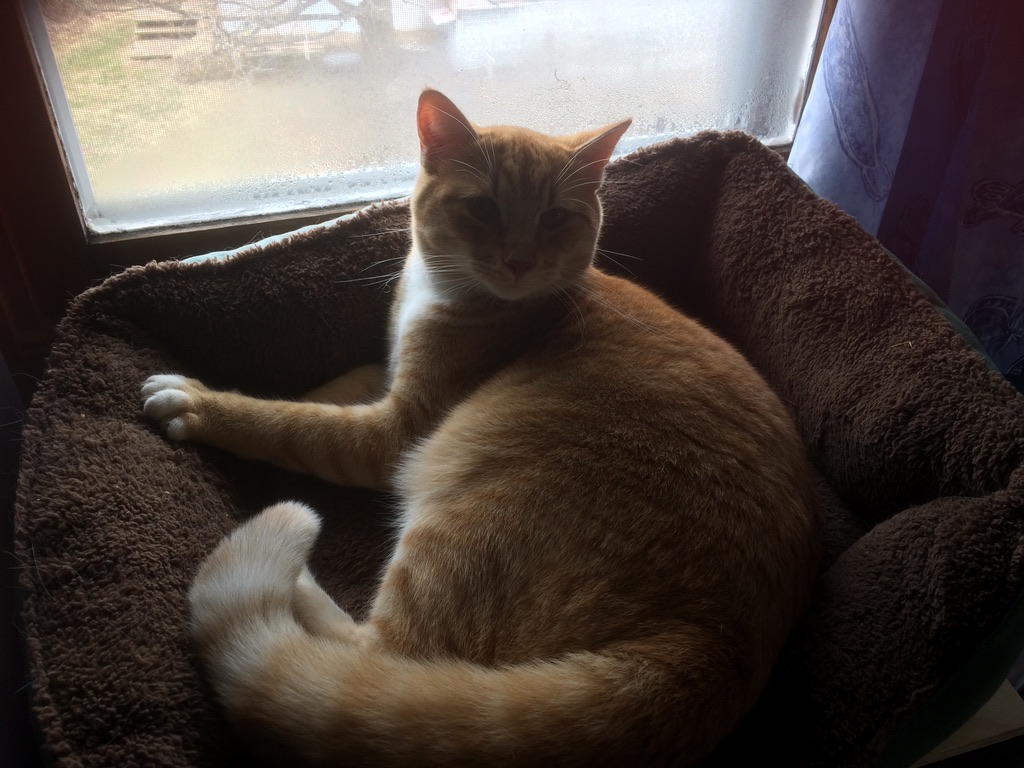
Water flow is simple since it runs as a constant-flow waterfall system. Due to this design, there is no separate sump tank. The pump runs via a timer that runs for 15 minutes on, and then 45 minutes off. A small 3mm piece of aquarium-supply air hose is threaded down into the bottom of the growbed, and hangs down over the fish tank; this runs as a very small loop-siphon that ensures that water does not lay stagnant in the bottom of the growbed between cycles.
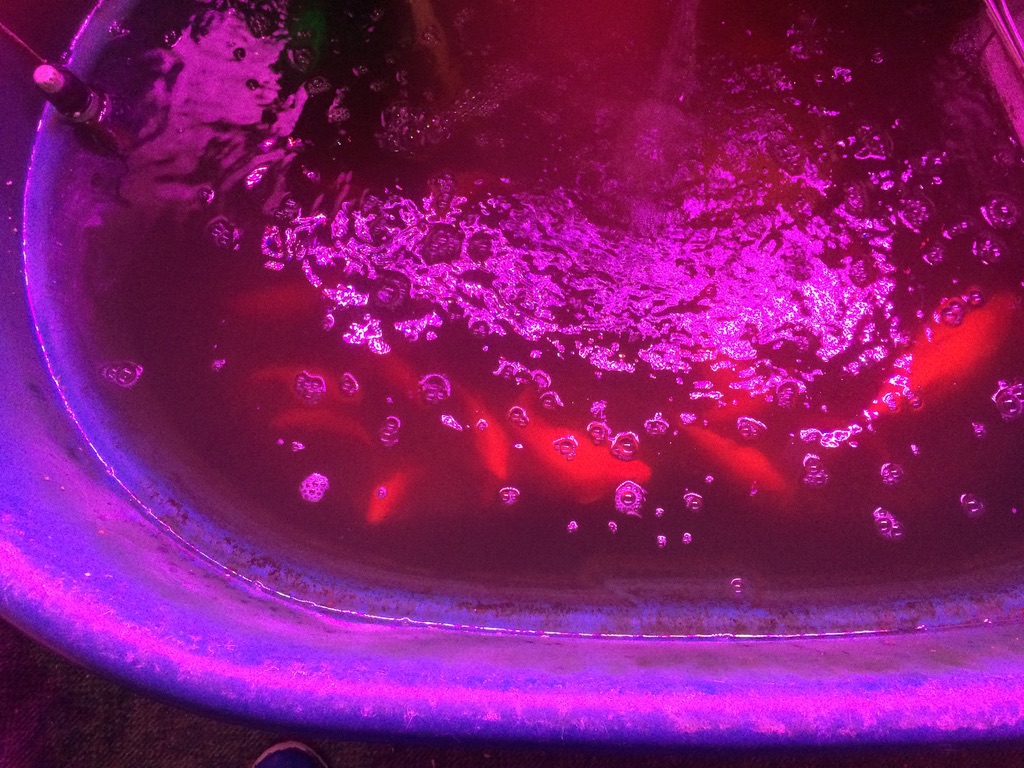
The current plants are chives, celery, mescaline and garlic. It’s working pretty well, after a bit of fussing to get the rate of flow to be exactly what I wanted. Solids management is done via mechanical filtration that needs to be cleaned every 3 to 4 weeks.
Very interesting! Reading this post, I learned a lot about aquaponics, plus there was a bonus cat AND goldfish. What’s not to love? 🙂
Seriously — it’s really cool to see your set-up!